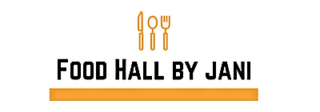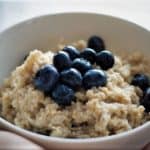1. More protein, especially whey protein

Credit: Bob's Red Mill
When it comes to tissue repair, the current dietary guidelines of .8 g/kg (or less than .4 g/lb) of protein for adults is too low. For better healing, try 1.2 to 2.0 g/kg. This especially applies to adults older than 50.
The consensus among dietitians and other nutrition health professionals is that the current recommended daily allowance (RDA) is not enough protein for older adults. They need at least 1.2 g/kg because they are not very efficient when it comes to building muscle in response to eating protein.
We will have to wait until August 2020 (maybe later with the advent of coronavirus), to find out if the 2020-2025 Dietary Guidelines for Americans increase the amount of daily protein recommended for older people.
Protein, especially whey protein, provides the amino acids necessary to build muscle and connective tissue like ligaments and tendons. Unfortunately, tendons are slow to heal because of their poor blood supply and can take longer to heal. Although cartilage can grow when bones heal, it does not repair itself, readily. Sometimes, this can translate into a surgical fix.
The healing time frame for different tissues is as follows:
- Bones: 4 to 8 weeks
- Tendons: 12 weeks or longer
- Ligaments: 6 weeks or longer depending on the severity. (They can require surgery.)
- Cartilage: Very difficult to heal when damaged
- Muscles: 3 weeks for a simple strain to months for a more serious tear
Whey protein is especially suited for both muscle building and repair because it contains leucine, thought to be the most anabolic of the branched-chain amino acids (BCAAs). The BCAAs, which are leucine, isoleucine, and valine, are popular for their mass building effect when paired with resistance exercise.
Leucine stimulates the mTOR pathway, which is important for cellular growth/protein synthesis. It also digests very quickly and works best for repair if consumed 30 to 60 minutes before or after a rehab session or other form of exercise.
The RDA for leucine is 39 mg/kg of body weight or 17.7 mg/lb. If you weigh 70kg (~154 pounds), then your leucine intake should be about 2730 mg/day. (Note: This RDA is ancient. It was released in 1989; now, some clinicians feel that the RDA should be higher.)
Best sources of leucine tend to be animal-based, i.e. meats, chicken, and fish. Surprisingly, tofu is high in leucine, and cheese is another good bet. The average scoop of whey protein powder is about 10% leucine, so if your scoop is 28 grams, the leucine content is about 2800 mg (2.8 g).
Here is a list of high-leucine foods:
| Food | Amount of leucine per 100 grams (approximately 3.5 ounces) |
| Chicken leg | 2000 mg 🍗 |
| Beef sirloin | 2358 mg |
| Tuna | 2431 mg |
| Tofu (firm) | 1392 mg |
| White beans
(canned) |
639 mg |
| Parmesan cheese | 3452 mg |
2. Eat vitamin C-rich fruits and vegetables; 5 servings each day
Vitamin C plays an important role in collagen synthesis, which is key to musculoskeletal injury repair. (For more information on collagen, see my posts on how collagen can help hold your body together and where to find collagen if you are vegan -- think tofu!) Maintenance of cartilage and blood vessels and the formation of scar tissue are associated with vitamin C.
The most important aspect of this dietary hack is to eat the vitamin as fresh food. Resist the urge to supplement. Intake of more than 1000 mg of vitamin C, especially as tablets, capsules, Emergen-C powder, can slow tissue repair. To maximize the vitamin’s healing effect, eat a juicy fruit, like berries, about 30 minutes prior to a therapy session.
Vitamin C is renowned for its ability to obliterate free radicals that cause inflammation. The problem is that your body needs some inflammation (not too much) to call out for mechanisms that assist with tissue repair.
With few exceptions, the nutrition power that comes from food is more easily utilized by your body than what you get from pills. Fiber is the added bonus from eating fresh fruits and veggies. It feeds your microbiome, and fiber also helps you feel full for longer periods.
Between the fiber and the whey protein, which can keep your appetite in check, you may lose weight. Or, at least, not gain added pounds during injury rehab when you may be less active than usual.
Here are some go-to foods for vitamin C. One serving of fruit or vegetables is ½ cup.
| Food | Vitamin C per cup |
| Kiwi fruit | 167mg |
| Bell peppers (especially red) |
152mg |
| Strawberries | 98mg 🍓 |
| Navel orange | 96mg |
| Broccoli | 81mg |
3. Be sure to get enough zinc, but not too much!
Zinc promotes healing by encouraging cell division; it helps keep skin and mucous membranes intact. It strengthens the immune system. Dieticians often use supplements containing zinc to improve the healing of pressure ulcers.
The RDA for men is 11 mg and for women, it is 8 mg. Do not consume more than 40 mg/day (the upper limit for zinc) because this micronutrient does not play well with other micronutrient metals.
Zinc interferes with iron and copper absorption. You need a small amount of copper to assist with wound healing while anemia results when large doses of zinc are taken every day.
Non-vegetarians who are eating enough protein will get healthy amounts of zinc from the meats in their meals. For vegetarians, the situation is trickier. Substances in beans, seeds, and the fibrous, outer layer of grains can bind to both the plant proteins and the zinc and prevent them from being fully absorbed. I have seen estimates that put absorption of plant-based forms of zinc at 50%.
Here are some sources of zinc for omnivores and vegetarians. Shellfish are notoriously rich in zinc (especially, oysters); other good choices are lentils, beef, tofu, seeds, and yogurt.
| Food | Amount of zinc |
| Scallops | 1.3 mg in 3 ounces |
| Beef chuck | 9 mg in 3 ounces |
| Tofu (firm) | 1.7 mg in 3 ounces |
| Lentils, cooked | 3 mg per cup |
| Oatmeal | 2 mg per cup |
| Blackberries | .8 mg per cup |
4. A handful of B vitamins keeps the body running smoothly
The basic Bs – thiamin (B1), riboflavin (B2), niacin (B3), pyridoxal phosphate (B6) – play important roles in metabolism. They facilitate a huge number of enzymatic reactions in the body and pump up the mitochondria’s ability to produce energy.
Additionally, vitamin B12 is important for energy as it gives a crucial assist in red blood cell formation. It's also a vitamin that can be lacking in many people, especially older adults and vegans.
Stress can deplete these vitamins, as can drinking too much caffeine and/or alcohol. While a healthy diet should supply adequate B vitamins, a B-complex supplement can address any deficiencies for those whose diets are not well-rounded or who are chronically stressed.
5. For non-vegetarians: Consider gelatin
Recent research by Baar (2017) shows that a15 mg of gelatin capsule 30 to 60 minutes prior to rehab exercise can augment collagen production and speed return to sports activities.
As this gelatin intervention demonstrates, timing is critical in relation to nutrition hacks aimed at healing injuries. For best results, the nutritional therapy should be taken prior to exercise, ideally in a 30- to 60-minute window before a physical therapy session.
The reason is for this is that tendons, for example, have a poor blood supply. Circulation improves during an activity like rehab or exercise; with improved blood flow comes the delivery of nutrition. To obtain the best results from dietary interventions, use that hour before training and rehab to load up your protein, vitamin C, and gelatin, preferably in that order.
Other supplements to consider:
- Glucosamine: Some research supports its use for healing fractures and for pain management.
- Chondroitin: Often paired with glucosamine, it has a reputation for helping with arthritis.
- Magnesium: Like the B vitamins, this micronutrient is important for energy production and facilitates a large number of reactions in the body. Muscle and nerve functions are dependent on adequate magnesium, particularly muscle relaxation. Most people do not get enough dietary magnesium. You can absorb it through your skin by soaking in Epsom salts (magnesium sulfate).
- Turmeric: Research supports its use as an anti-inflammatory, but be wary of its blood-thinning effects, especially if you take Coumadin or Warfarin.
- Vitamin D: Essential for bone healing (with calcium and magnesium); it is also important for wound healing.
Many other nutritional therapies and supplements aimed at healing exist. Because of our individual differences, what helped one person, may not work for another or may be of limited use. Supplements can be very expensive and are usually not as effective as fresh food.
(Don't forget R-I-C-E therapy: Rest-Ice-Compression-Elevation for management of pain and discomfort.)
The takeaway:
Five effective nutrition interventions for healing from orthopedic and sports injuries are:
- Protein, especially protein that contains the amino acid leucine. Aim for 1.2 to 2 g/kg of protein each day. For a 150-lb male, that equals 82 to 136 g/day. For a 110-lb female, it is 60 to 100 g/day.
- Eat at least 5 servings of vitamin C-rich fruits and vegetables each day and do not take high dose supplements of the vitamin.
- Get some zinc every day, but do not supplement with more than 40 mg per day. Try not to take zinc at the same time as other metallic micronutrients, such as iron, copper, or calcium.
- Add a B-complex supplement to your daily routine. The B vitamins keep your mitochondria humming along and assist in a multitude of enzymatic reactions.
- Consider a 15 g gelatin capsule prior to physical therapy to boost collagen production and crosslinking.
Copyright © 2020 Jani Hall Leuschel







jani
Your welcome! Thanks for reading.
Ruth Hall
Thanks for elaborating pn my comment concerning negative effectsof too much vitamin c. Good to have explicit details--makes for better understanding!
jani
Another thought popped into my head about vitamin C: High doses will interfere with your B12 absorption. Vitamin B12 is often a nutrient of concern for older people.
Just wanted to share! 😊
jani
In many respects, you're right about vitamin C. It is a water-soluble vitamin, so toxicity is not too much of a worry. The problem comes when you take high doses. The RDA is only 75 mg for women and 90 mg for men although smokers' needs are slightly increased. The upper limit is 2,000 mg; taking more than this can cause digestive distress, and it does not help injuries heal.
It may not seem logical that vitamin C improves immune function and not soft tissue healing. With this vitamin (and many others), more is not better. Tissue healing is slower if vitamin C is beating down free radical formation and keeping inflammation levels too low. Also, high levels of intake can cause you not to absorb nutrients if you are having some of the digestive side effects of high doses like diarrhea.
I have seen studies that recommend increasing the RDA for vitamin C to about 120 mg/day.
Thanks for reading the blog; I'm glad you find you can use it to help maintain your health (on all our minds these days).
Take care and stay well!!!
Ruth Hall
Wow! I need to print this most thorough treatment of what we need, how much and where to obtain it, and try to incorporate it into my health regime--it's almost like a recipe for gaining and maintaining health--and I do appreciate the tidbits! For instance, too much Vit. C causes absorption problems of other essentials? I thought if one ingested too much, the body just got rid of it! It's my go-to first thing if not feeling well!